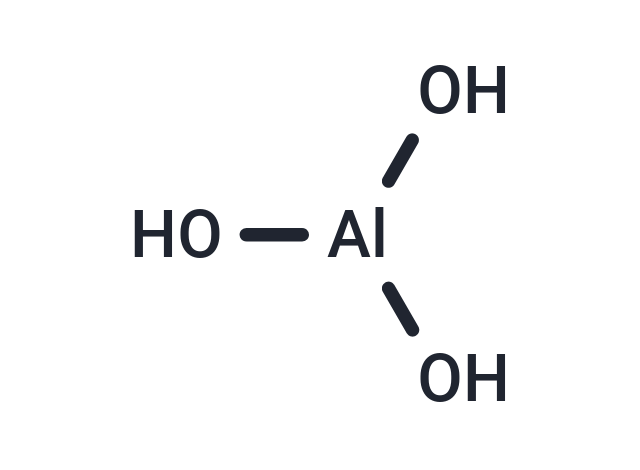Shopping Cart
- Remove All
 Your shopping cart is currently empty
Your shopping cart is currently empty

Aluminum Hydroxide is an orally active primary form of aluminum used as an adjuvant. Research on aluminum hydroxide-based adjuvants includes examining its repository effect, pro-phagocytic effect, and activation of the pro-inflammatory NLRP3 pathway.

| Pack Size | Price | Availability | Quantity |
|---|---|---|---|
| 1 g | $31 | In Stock | |
| 5 g | $70 | In Stock | |
| 10 g | $98 | In Stock | |
| 1 mL x 10 mM (in DMSO) | $50 | In Stock |
| Description | Aluminum Hydroxide is an orally active primary form of aluminum used as an adjuvant. Research on aluminum hydroxide-based adjuvants includes examining its repository effect, pro-phagocytic effect, and activation of the pro-inflammatory NLRP3 pathway. |
| In vivo | Administered orally at a dosage of 100 mg/kg/day for a duration of seven days, Aluminum Hydroxide enhances lipid peroxidation while simultaneously reducing the activity of Superoxide Dismutase (SOD) in the brain. Additionally, it is capable of dissolving in distilled water to form a homogeneous suspension [3]. |
| Molecular Weight | 78 |
| Formula | AlH3O3 |
| Cas No. | 21645-51-2 |
| Smiles | [Al](O)(O)O |
| Relative Density. | 2.42 g/cm3. |
| Storage | Powder: -20°C for 3 years | In solvent: -80°C for 1 year | Shipping with blue ice/Shipping at ambient temperature. | ||||||||||||||||||||
| Solubility Information | DMSO: 1 mg/mL (12.82 mM), Sonication is recommended. | ||||||||||||||||||||
Solution Preparation Table | |||||||||||||||||||||
DMSO
| |||||||||||||||||||||

Copyright © 2015-2025 TargetMol Chemicals Inc. All Rights Reserved.